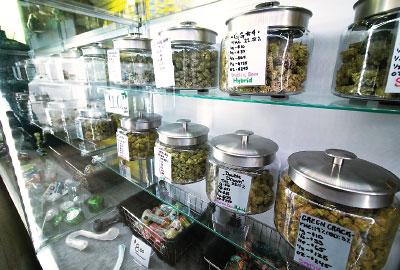Numerous Hurdles Hinder High-Quality Cannabis Research
Abstract
Experts described the obstacles preventing researchers from conducting well-controlled clinical studies at the inaugural symposium of the Medical Cannabis Research Advocacy Alliance.
Pundits like to discuss movements like “red waves” or “blue waves,” but the past decade has borne witness to the “green wave” of cannabis legalization. With South Dakota making medical cannabis legal as of July 1, cannabis is legal for medical and/or recreational use in 35 U.S. states plus the District of Columbia. Thirteen other states have legalized cannabidiol (CBD) products with lower tetrahydrocannabinol (THC) content.
With growing legalization and use of cannabis and CBD, experts say there remains a need for higher quality studies of cannabis to protect patients. Representatives from pharmaceutical companies, medical societies, academia, and patient groups recently formed the Medical Cannabis Research Advocacy Alliance (MCRAA)—a coalition seeking to advance medical cannabis research and regulatory practices. In March, MCRAA held its first virtual educational symposium that highlighted the current cannabis research and policy challenges.

The dizzying array of medical cannabis strains available complicates research studies that rely on one specific strain approved by the National Institute on Drug Abuse.
While some people may think that the problem with cannabis research is a lack of studies, the issue is not quantity but quality, said Jordan Tishler, M.D., an instructor of medicine at Harvard Medical School, president of the Association of Cannabis Specialists, and a member of the MCRAA Board of Directors. He noted that there are thousands of studies dealing with the medical effects of cannabis, but almost all are observational or retrospective studies. “We need more rigorous, controlled trials,” he added.
Experts at the virtual symposium spoke of several factors standing in the way of such controlled trials.
The greatest barrier to cannabis research is the designation by the Drug Enforcement Administration (DEA) of cannabis as a Schedule I substance, said Ziva Cooper, Ph.D., during her session on the cannabis research landscape. Cooper is an associate professor of neuroscience and psychiatry at the University of California, Los Angeles, and director of the UCLA Cannabis Research Initiative. In addition, the supply of approved research-grade cannabis is limited.
Research-grade cannabis—which is grown and distributed by the National Institute on Drug Abuse—offers a consistent product in terms of CBD and THC levels, thus making studies in different labs comparable. “But the NIDA supply is not reflective of what’s available in the dispensaries across the country,” Cooper said. If a study finds some therapeutic benefit in the NIDA strain, it may not be applicable to the strains that people can buy.
Cooper added that working with CBD is not much easier, even though it is not listed under the five DEA schedule categories. The Food and Drug Administration requires certain standards for clinical purposes, so researchers must buy pharmaceutical-grade CBD from approved vendors, which again limits real-world applicability.
Another significant obstacle to overcome is the lack of a good placebo for inhaled cannabis, Cooper said. “If a product does not look or smell like the real thing, it is hard to do controlled clinical trials,” she said.
Yet another challenge facing cannabis research is the limited interest cannabis companies have in conducting large studies, explained Tishler. “Why would a company spend millions of dollars on research when it can make millions of dollars putting its cannabis product on shelves?”
Tishler recommended that federal agencies find ways to incentivize cannabis companies to conduct quality research while also encouraging more research from academic centers.
The MCRAA symposium also highlighted the need for better product labeling of marketed cannabis or CBD-containing products. The only item required to be on a cannabis product label in every jurisdiction is the THC content, noted Jahan Marcu, Ph.D., the co-founder of Marcu & Arora, a multiservice firm aimed at supporting cannabis and psychedelic companies. Anything else is optional, which leads to most companies leaving out information or filling the labels with so much information that relevant items like recommended dose are hard to find. Marcu noted in his talk that even the “universal” symbol for cannabis-containing products varies from state to state—unlike other universal symbols such as for poison or radiation.
“Having clear and consistent product labeling keeps providers informed and patients safe,” Marcu said. He added that ASTM International (a prominent technical standards organization) is working on proposed standards for cannabis products, and he is hopeful that the United States will adopt them and ensure they are consistent across states.
In the meantime, he offered some practical suggestions to physicians and patients who may be interested in medical cannabis or CBD products. First, look for products that have features like tamper-proof containers, child-resistant caps, and nontransparent packaging. Ideally, products should also provide a clear CBD dose in milligrams and have an expiration date.
“Also, every cannabis dispensary should have a health professional readily available on site or over the phone who can clearly explain each product label,” he said. “If someone is not available, then find another location.” ■



